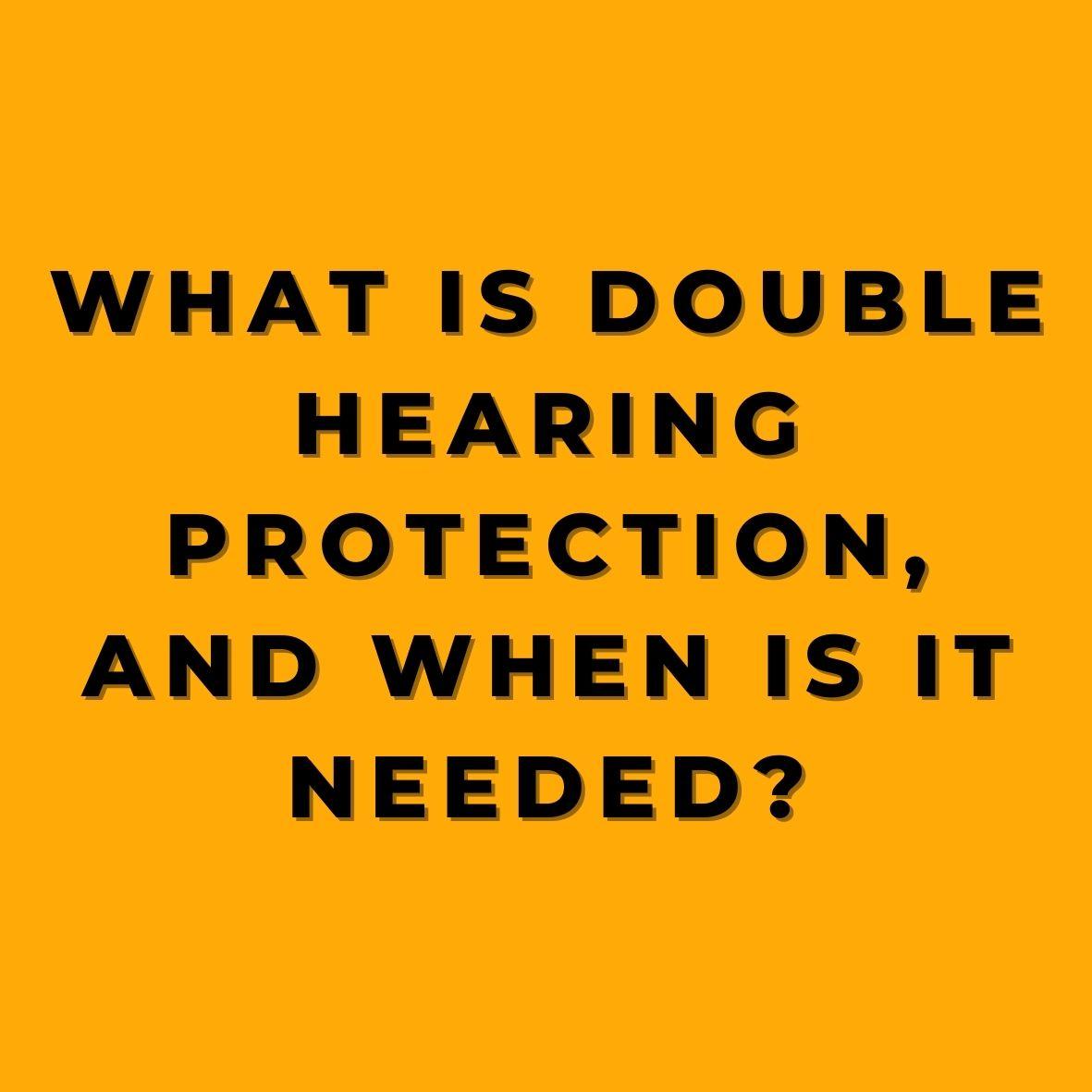Hearing protection is a critical aspect of safety in any workplace where there is exposure to loud noise. However, for some jobs and environments, standard hearing protection may not be enough. That’s where double hearing protection comes in. But what exactly is it, and when is it needed?
Double hearing protection is a combination of two different types of hearing protection, typically earplugs and earmuffs, worn together. The idea behind it is that the earplugs will block out lower frequency noise, while the earmuffs will block out higher frequency noise. Together, they provide a more comprehensive level of protection than either one alone. This is because earplugs and earmuffs each have their own strengths and weaknesses. Earplugs are better at blocking out lower frequency noise, while earmuffs are better at blocking out higher frequency noise. By wearing both together, you can block out a wider range of noise frequencies, providing better overall protection for your ears.
Double hearing protection is often recommended in environments where noise levels exceed 110 decibels (dB). According to the Occupational Safety and Health Administration (OSHA), any noise level above 85 dB can cause permanent hearing loss over time. So, it is important to protect your ears in such environments. In addition, the National Institute for Occupational Safety and Health (NIOSH) recommends that workers should not be exposed to noise levels above 90 dB for more than 8 hours a day. It’s important for employers to regularly monitor noise levels in the workplace and take steps to reduce exposure if necessary, including providing double hearing protection for employees.
Double hearing protection is often used in industrial settings, such as construction sites, factories, and power plants. It’s also commonly used in the aviation and military industries, as well as in some types of recreational activities, such as hunting and motorsports. These industries have high levels of noise exposure, which can cause permanent hearing loss if not properly protected. It’s important for employers in these industries to provide double hearing protection for their employees and to establish a hearing conservation program to monitor noise levels and protect employees’ hearing.
In addition, double hearing protection is also recommended for workers in certain healthcare fields, including dentistry and emergency medicine, as well as for musicians and other performers who are regularly exposed to loud noise. These fields have their own specific sources of loud noise, such as dental drills and sirens, which can cause permanent hearing loss if not properly protected. It’s important for employers in these fields to provide double hearing protection for their employees and to establish a hearing conservation program to monitor noise levels and protect employees’ hearing.
Employers have a legal obligation to protect their employees from loud noise, and double hearing protection is an effective way to do that. Employers should establish a hearing conservation program and regularly monitor noise levels to ensure that employees are not exposed to excessive noise. Employers should also provide employees with double hearing protection when necessary, and ensure that all employees are trained on the proper use and care of the equipment.
It is also important for employees to be properly trained on how to use and care for their hearing protection, as well as the importance of wearing it consistently. Regularly checking and maintaining the hearing protection equipment also goes a long way in ensuring its effectiveness. Employees should be trained on how to properly insert and adjust earplugs, as well as how to properly adjust and wear earmuffs. They should also be reminded of the importance of wearing their hearing protection consistently, as well as how to clean and maintain the equipment to ensure its effectiveness.
In conclusion, double hearing protection is a valuable tool for protecting workers in noisy environments. It provides a more comprehensive level of protection than standard hearing protection alone. Employers should consider providing double hearing protection for their employees when noise levels exceed 110 dB and establish a hearing conservation program. Employees should also be trained on how to properly use and maintain their hearing protection equipment and understand the importance of wearing it consistently. It is important for everyone to take the necessary steps to protect their hearing in high noise environments.










